15+ SAMPLE Conference Budget Proposal
-
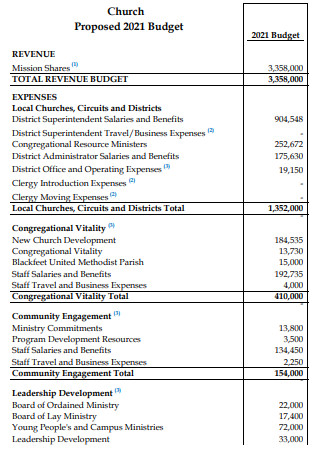
Church Conference Budget Proposal
download now -
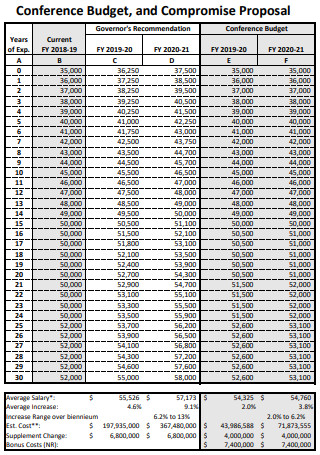
Conference Budget Compromise Proposal
download now -

Conference Operating Budget Proposal
download now -
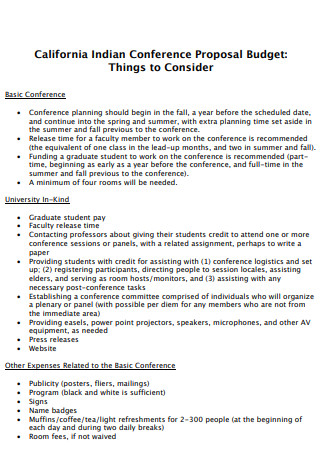
Basic Conference Budget Proposal
download now -
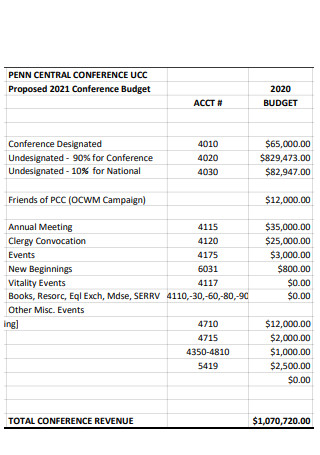
Sample Conference Budget Proposal
download now -

Conference Grant Budget Proposal
download now -
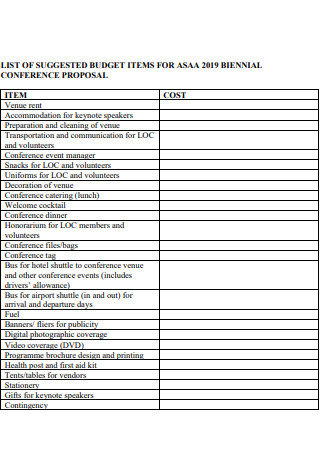
Conference Items Budget Proposal
download now -
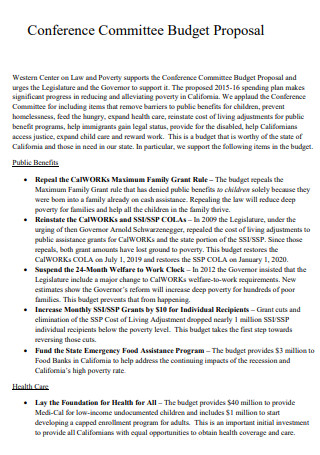
Conference Committee Budget Proposal
download now -
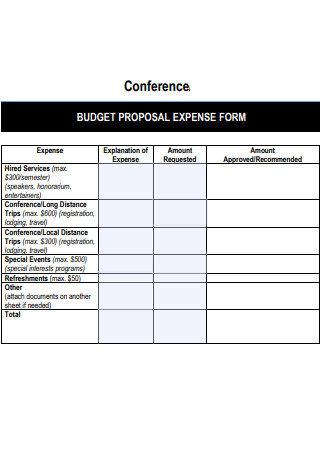
Conference Expense Budget Proposal
download now -
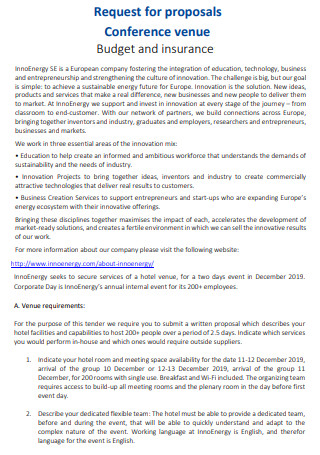
Conference Budget Request Proposal
download now -
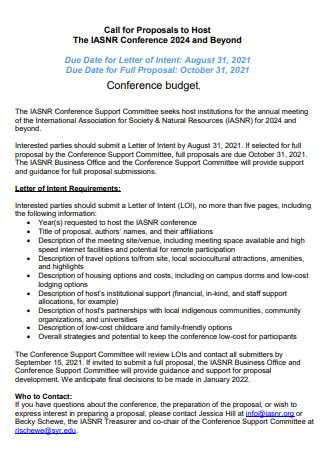
Conference Budget Host Proposal
download now -
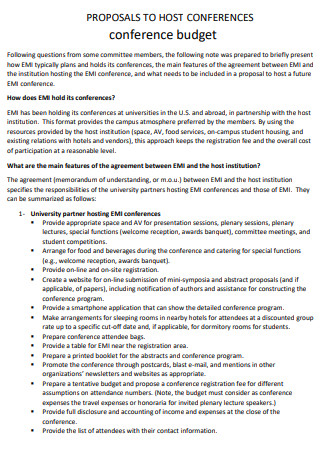
Conference Budget Proposal Example
download now -
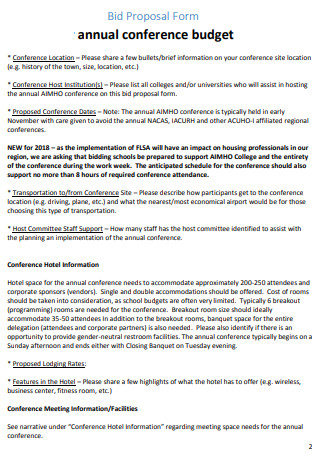
Annual Conference Budget Proposal
download now -
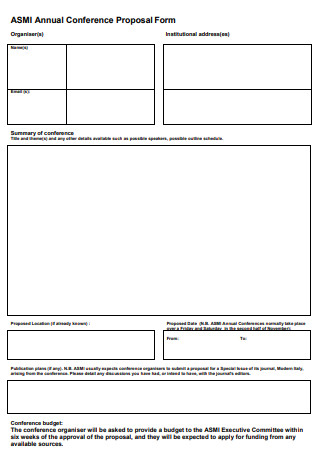
Annual Conference Budget Proposal Form
download now -
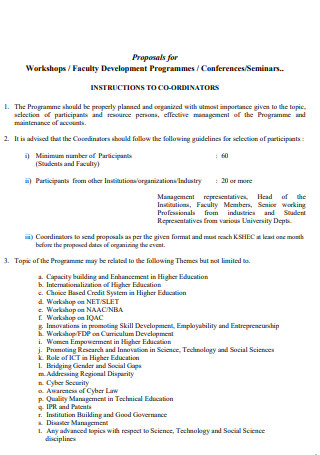
Formal Conference Budget Proposal
download now -
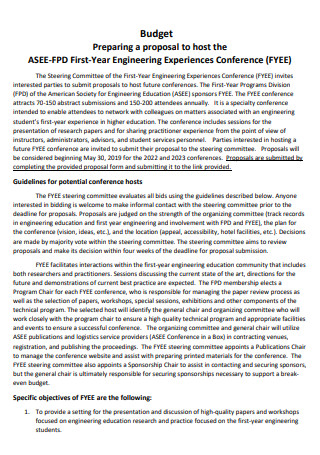
Conference Budget Proposal of Engineering
download now
FREE Conference Budget Proposal s to Download
15+ SAMPLE Conference Budget Proposal
What Is a Conference Budget Proposal?
What’s In a Conference Budget Proposal?
What Are the Different Types of Budgets?
How to Manage a Conference Budget
FAQs
Why would someone need an event budget proposal template?
What is a contingency cost in a budget?
What is the difference between a proposal budget and a project budget?
What Is a Conference Budget Proposal?
Before we define what this document is, we should get to know the main keyword first. What is a budget? Defined simply, a budget is referred to as a method of balancing income, spending, and financial goals over a certain period of time. In other words, it is an estimate of revenue and costs over a specific future time period that is used by governments, corporations, and people. A budget is essential because it allows you to have a better knowledge of your connection with your finances by pinpointing where required modifications will be made. When you’re creating a budget, one key thing to remember is that it needs to be adaptable to your current situation.
A conference budget proposal is a business document that outlines the financial budget plan for a conference event that will be sponsored by a company or organization. This proposal is critical since the finance team or department will use it to properly determine how much money the company will need to properly host a conference. In other words, this document can act as a thorough sales presentation for the conference activity or campaign for which the firm needs money. Having this document prepared enables the company to run the conference within their financial means and use what they have in the best and most efficient possible way.
What’s In a Conference Budget Proposal?
The intention of a conference budget proposal is to outline the financial needs and expenditures that are to be taken by the company in order to host a conference event properly. It also enables the company to use what financial means they have in the most efficient way possible. In order to do so, the document needs to be effective. And in order to be effective, here are the elements that should be written in the budget proposal:
What Are the Different Types of Budgets?
Listed and briefly explained below are the different types of budgets that can be encountered in the business world:
How to Manage a Conference Budget
Being attentive to your company’s expenditures especially when it hosts an event such as a conference is key to making the event run smoothly and be successful. With that being said, here are the steps one can take in order to successfully manage a conference budget:
-
1. Defining the Scope
The first step that anyone should do when planning to manage a conference budget, or any project or event budget for that matter, is to define its scope. You may ask yourself what should be done in order to define the scope of the project or event. The main thing that should be done in this step is to communicate with all stakeholders and the customers in order to have complete knowledge of what the project will entail so that you can build a thorough budget for the event.
-
2. Prepare a Budget Template
After defining the scope of the event to be hosted, which in this case is a conference, this step then follows. When it comes to the numbers, it’s critical to have a solid and comprehensive event budget template. When assembling the team that will form the core of the event staff, it is a nice bonus if they have served on similar events in the past so that prior templates may be derived from them. When you have the previously utilized templates, it is time to adjust and amend the template to meet the precise scope you are aiming towards.
-
3. Make a Baseline
After preparing a budget template and adjusting it to the scope of your event, this step then follows. In this step, it is important that you need to create a baseline fund for your budget. In creating the baseline funds, two factors need to be considered: these are the top-down and the bottom-up information you will be working towards. The top-down factor would refer to the amount that is given by the event sponsor towards the company and their aspirations that the event should be accomplished within the given budget. And, in order to determine whether the amount provided by the event sponsor is adequate, you must consider and develop the bottom-up factor with specifics. Ensure your calculations are reasonable when generating the baseline budget so you aren’t caught off guard halfway through the project.
-
4. Creating a Risk Budget
After creating a baseline fund for the budget, this step will then follow. When managing an event budget, take into account that a risk budget is something that everyone should have. This is because there will be inevitable scope creep throughout the planning phase of the event and the event itself or they may be unexpected occurrences throughout the conference event. A risk budget serves as a safeguard budget in case any form of difficulties are encountered.
-
5. Setup a Budget Dashboard
After setting aside or creating a risk budget, the next step to be done is this one. In creating an event budget dashboard, you should have a few important indicators that you will be intending to measure throughout the project. In order to send status updates to a regulator, or another stakeholder, it’s always a good idea to have a high-level yet concise and efficient dashboard and status reporting template. Some of the metrics that should be used in the dashboard are the target cost of the event, the current or actual cost of the event, the cost to benefit ratios, and the run rate for the project.
FAQs
Why would someone need an event budget proposal template?
An event budget proposal template is needed because it provides insight into the projected financial picture of their organization or project. Having templates give them an opportunity to have an easy-to-use list of predicted expenditures and expected income, allowing users to analyze any disparity between budgeted and actual figures. Users may analyze the viability of a budget by comparing budgeted and actual numbers if they have a budget proposal for your event. This data can be used to recalculate a budget proposal in order to align it with actual costs and revenue for a more accurate budget.
What is a contingency cost in a budget?
Contingency costs are costs that you anticipate will occur but are not completely certain of. These might include increased material cost, fluctuations in your currency’s exchange rate, and so on. Some sponsors recommend you to provide a blanket rate of a certain percentage in your budget, while others do not. It is critical to have a strong justification for incorporating contingencies. Include it not only to get an extra cushion but with a clear explanation in place. Ensure that the sponsor acknowledges your reasons and does not believe you included contingency fees for the sole purpose of increasing the budget.
What is the difference between a proposal budget and a project budget?
A proposal budget is a budget that seeks to persuade the evaluator who reviews your proposal that you will have a stronghold on your strategy and are deserving of the money. A project budget, on the other hand, is intended to lead you through the stages of a project, and it is intended to be adjusted and modified within its own relevant boundaries to what happens throughout the project itself.
Having an effective conference budget proposal template is a great advantage since it lets the company understand how much money it actually needs to run the entire event successfully within their financial means and lets them do so effectively. In this article, various examples of such templates exist to help guide you whenever you need to make one.
